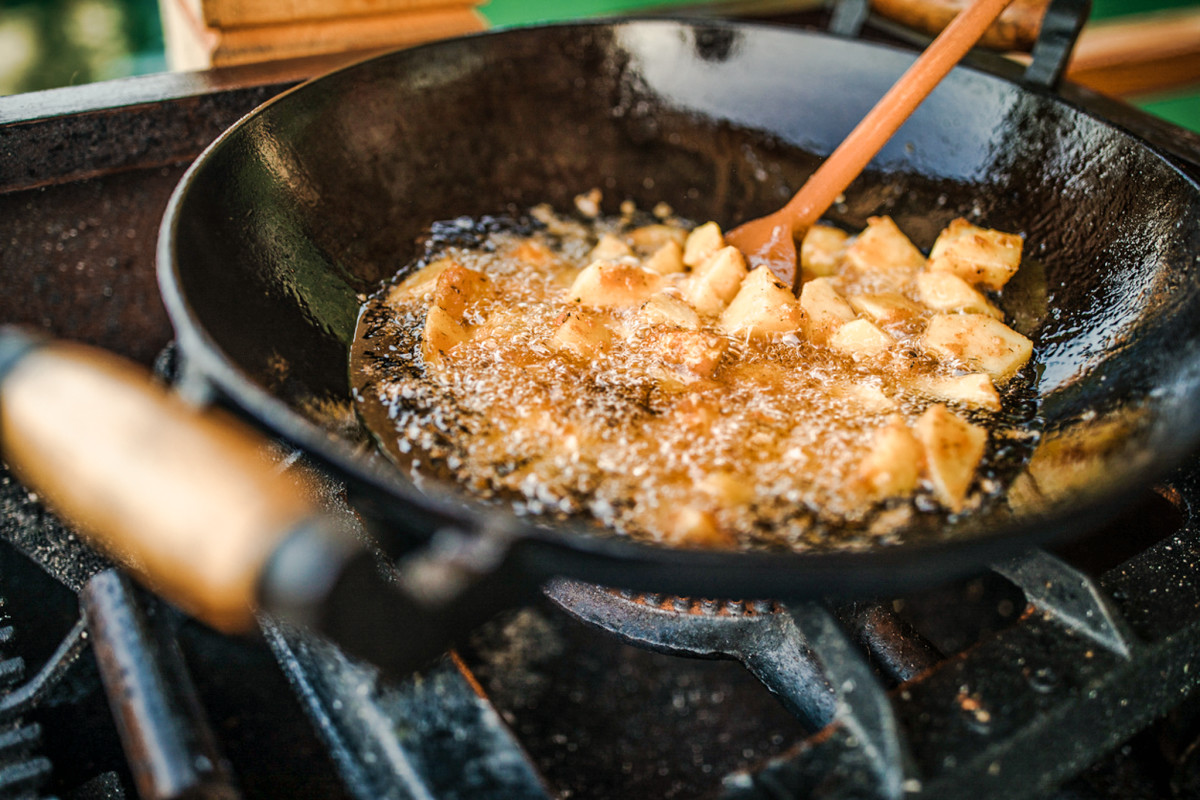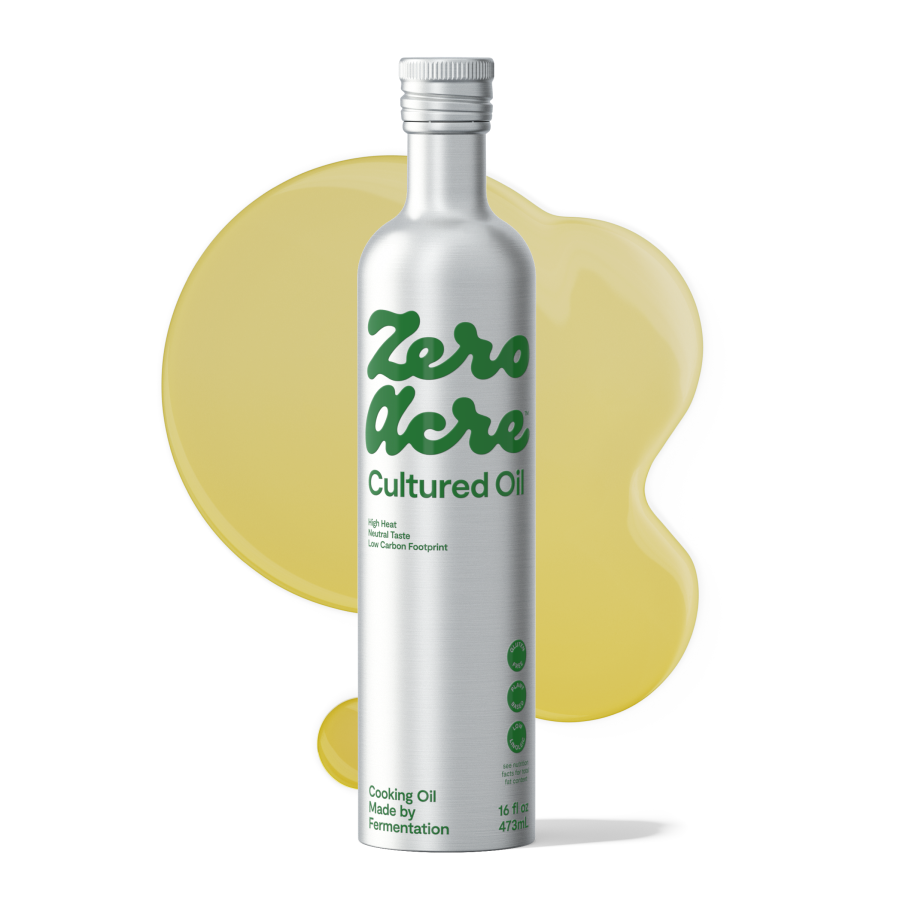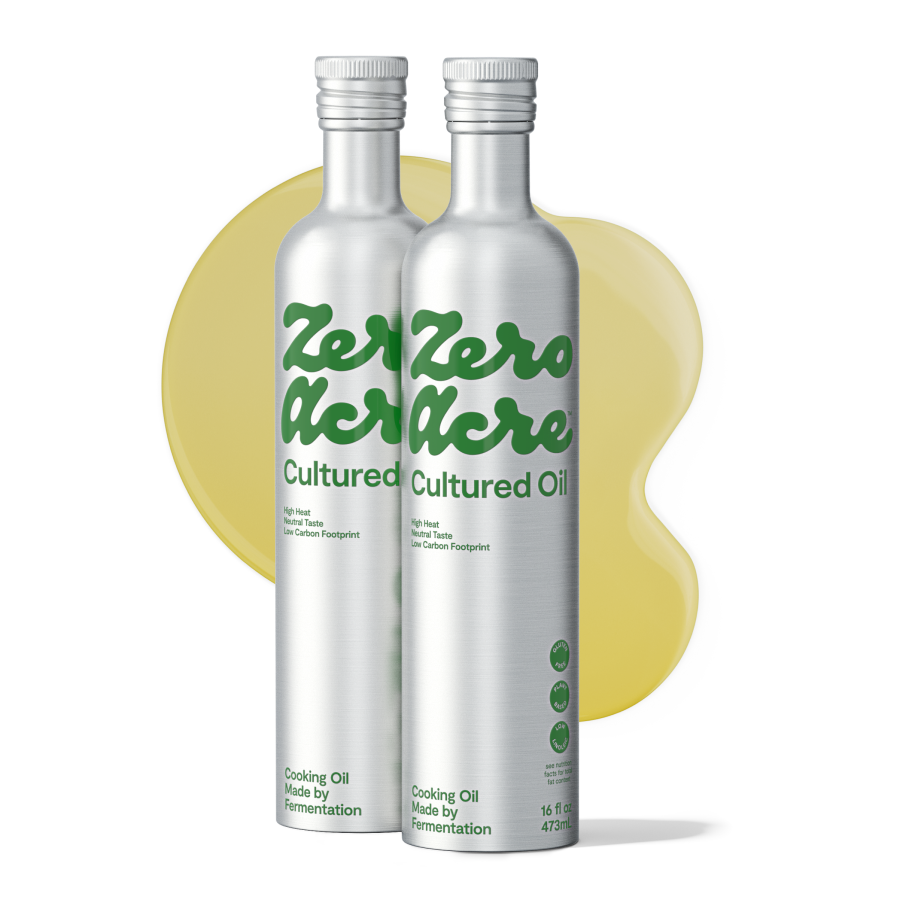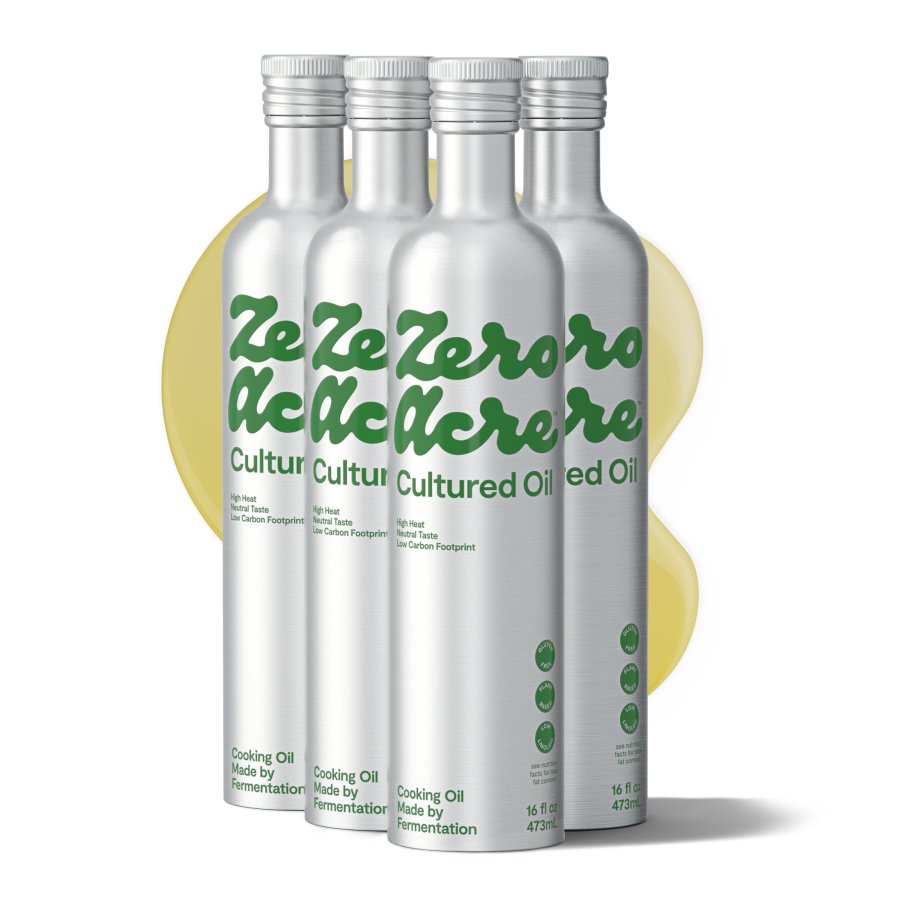WRITTEN BY: Corey Nelson
Article at a Glance
Common vegetable oils like soybean, sunflower, and canola oil are high in unstable, inflammatory omega-6 fats and are usually rancid.
You've probably got a quart or more of vegetable oil in your cabinet right now that you probably won’t be using for cooking anytime soon.
Instead of cooking with it or discarding it, you can use vegetable oil as an inexpensive, non-toxic replacement for various products around the kitchen, garden, and home.
Some applications even work with used cooking oil that would otherwise be thrown out.
We've also included suggestions on easy ways to get gallons of oil for big projects when you need it!
Introduction
Maybe you're moving away from eating vegetable oils for culinary reasons. Why cook with rancid-tasting oil when there are tastier, healthier substitutes?
Or maybe you recently learned that seed oils are full of inflammatory omega-6 fats, may be toxic when consumed, and are among the worst foods for the environment.
Or maybe you've always known, deep down, that something wasn't quite right about vegetable oils.
Speaking of which, how long has that old bottle of soybean, sunflower, or canola oil been sitting in your cabinet? Better not to check, probably.
But not so fast! Before you toss your vegetable oil, read these fun, useful suggestions on what to do instead (none of them involve eating it — and your body will thank you for that).
Season Your Cast Iron Pan
If you own a cast iron pan, you might already be aware of seasoning. When your pan is new, or any time you need to renew the all-natural "non-stick" surface, you can slick it down with cooking oil and heat it to 350-400°F for about 20 minutes.
This seasoning process works through a process known as polymerization. During heating, unstable unsaturated fatty acids form cross-linked molecular bonds and become polymers [*].
The newly-formed polymers bond at a molecular level with the pan's iron surface, preventing food from sticking during cooking and making it easier to clean. As long as you don't burn food onto the surface or scrub it too hard, they can remain for a long time. This is also why most people scrub their cast-iron pans with minimal (if any) soap.
Interestingly, the very same properties that make common vegetable oils unhealthy for consumption are what make them excellent for seasoning cast iron. Polyunsaturated fatty acids (PUFAs) like omega-6 linoleic acid are the least stable form of fat and naturally form polymers when heated.
Polymers and other oxidation byproducts are what make food fried in seed oils bad for your health. But when you use seed oils to season your pan, the polymers form a relatively stable bond with the cast iron, so it doesn't accumulate in your food once the seasoning process is complete.
Manage Garden Pests
Neem oil an organic insecticide or "biopesticide" extracted from the neem tree, Azadirachta indica Juss., originally from India [*].
When sprayed onto affected areas, neem works to inhibit the growth of fungus, mites, and eggs, preventing damage to plants and disrupting pests' reproductive cycles. It smells similar to garlic with a strong sulphuric odor. It's also relatively expensive.
If you don't have neem on hand for pest control, you can use canola oil or sesame oil as an inexpensive alternative.
According to Health Canada, canola oil "has properties of an insecticide, miticide, and fungicide since it controls a variety of insects and mites and suppresses powdery mildew on many ornamental, vegetable, fruit, and nut crops both in the field and greenhouse, as well as on Cannabis (marihuana) produced commercially indoors for medical purposes. As an insecticide/miticide, canola oil acts predominantly through suffocation, while as a fungicide, it creates a physical barrier to prevent plant infection by fungi" [*].
And according to the New York State Integrated Pest Management Program, sesame oil works similarly as an antimicrobial, fungicide, and insecticide [*].
Want to mix your own organic broad-spectrum pesticide? It doesn't take much: simply add one tablespoon of canola or sesame oil and one tablespoon of liquid soap, detergent of silica to a gallon of water in a bucket or pump sprayer. Mix thoroughly to emulsify and spread the oil evenly into the solution, then apply to plants.
You can also add essential oils like thyme oil, mix in other vegetable oils like corn, soybean, or cottonseed oil, emulsify it with lecithin, or mix oils with diatomaceous earth as a soil dressing to kill nematodes (roundworms) [*].
Lamp Oil for Emergencies
When the power goes out, you can use vegetable oil in place of lamp oil (paraffin) or kerosene.
If you've got hurricane lamps, you can refill them with vegetable oil instead. You can also mix it 50/50 with your usual lamp fuel.
Another viable option for your inner survivalist: try making your own vegetable-oil-burning lamps using cotton swab wicks and shallow jars with a hole cut in the lid.
We recommend testing your oil-burning lamp with vegetable oil ahead of time and, of course, stay safe. Don't leave it unattended and be sure not to fall asleep while it's burning.
Moisturize Your Skin
Eating vegetable oils high in omega-6 fats isn't good for your skin, but you can use them topically.
Your skin barrier or stratum corneum is an important part of your immune system. This tough, outermost layer of skin protects against external threats and helps your skin stay smooth and moisturized [*]. Skin barrier breakdown results in itchy, dry, cracked skin and sometimes causes conditions like eczema.
Omega-6 fats and omega-3 fats are both required for proper skin barrier functioning. In conditions like eczema, patients often have skin deficiencies of these essential fatty acids, even though, in some cases, the rest of their bodies aren't deficient [*].
Some research has shown benefits to applying topical omega-6 oils to restore barrier function and hydrate skin [*]. Your skin barrier is responsible for keeping moisture where it belongs. If your skin is dry and flaky, you can rehydrate your skin's protective barrier by moisturizing with oil.
Lubricate Door Hinges
Got squeaky door hinges? Try brushing or dripping some vegetable oil onto them.
When used as a lubricant for metals, oils help reduce friction between contact areas and prevent further corrosion.
Vegetable oil doesn't have the proper high-performance lubricating properties required for small engines or other applications that involve high speed, pressure, or heat, but it's perfect for most of the metal objects around your house that squeak and creak.
Polish and Clean Your Wood Furniture
For oil-rubbed wood or old-fashioned furniture finished with varnish, a little bit of regular upkeep goes a long way toward keeping it nice.
If you've got clean wood furniture that's looking a little bit dull or dry, simply wipe some vegetable oil onto it with a clean rag, rub it in, allow it to soak in, and then wipe it off with a clean, dry rag.
Note that different types of oil may affect the hue of the wood slightly, so it's smart to test on a small area first if you're unsure. Three of the most popular oils recommended for furniture polish are olive oil, walnut oil, and flaxseed oil (which is virtually identical to linseed oil), but there's no rule against using other oils. Although you may want to save that olive oil for healthy cooking if you don’t have any Zero Acre oil in your kitchen.
On the other hand, if your furniture is dusty, filmy, or grimy, you'll be better off using a two-in-one cleaning polish. But no need to purchase it — you can DIY with vegetable oil!
Here are two easy options that can work for a wide variety of furniture applications:
Vegetable oil furniture cleaning polish #1: Two parts vegetable oil to one part fresh lemon juice (1 cup vegetable oil, 1/2 cup lemon juice)
Vegetable oil furniture cleaning polish #2: Sixteen parts or more white vinegar to one part vegetable oil (1 cup or more of white vinegar, 1 tablespoon or less of vegetable oil)
For both recipes, be sure to mix thoroughly right before applying.
When applying an oil or cleaning mixture to your furniture, less is more. Instead of spraying or pouring it directly onto the surface, wipe it on and use the least amount possible to get your intended result.
Clean and Restore Your Leather Boots
You can maintain your leather boots — or any worn leather accessory — with vegetable oil. While the very best options are saddle soap or mink oil, depending on the leather product, vegetable oil also works fine.
Here's what you'll need:
Warm water (add a small drop of soap if the boots are really dirty)
A soft bristle brush
Several clean, lint-free rags or paper towels
Vegetable oil
First, remove the laces and wipe the boots down to moisten them with water (optionally, slightly soapy water). You don't want to soak them. Just get the surface damp.
Now you're going to gently brush them to work the grime out of the surface. Repeat the wiping and brushing steps until there's no more dirt to be removed with a clean rag or paper towel.
Wait overnight or until the boots are completely dry, which shouldn't take long if you didn't use very much water.
Now, simply apply small amounts of vegetable oil in a circular motion, section-by-section, using a clean, dry rag or towel. Allow it to absorb, then wipe any excess oil off.
Note that applying oil or any leather conditioning product can darken leather, so be sure to test on a small area first if you're uncertain.
Refurbish Roofing Shingles
Keep an open mind for this one.
Most common roofing shingles in the United States are made out of a base fabric material like felt, cellulose (wood fiber), or fiberglass that's treated with asphalt (the same sticky, black, petroleum-derived tar used for paving roads). They typically last 15-20 years.
These shingles are designed to expand and contract as they heat and cool each day under changing weather conditions. The asphalt allows them to retain their waterproof and insulating qualities year-round.
But over time, the oil component of asphalt shingle dries out and becomes brittle. As it begins to crack, your roof will begin to leak and shingles can come loose.
Replacing your roof is expensive, averaging around $8,500, with about 60% of that going to labor costs [*].
Recently, some companies have begun offering soybean oil-based treatments that can extend the life of your roof for a lot less than replacing it. They contain synthetic soy methyl ester, which is a derivative made from soybean oil. (It doesn't occur naturally in your leftover cooking oil.)
Should you paint your roof with soybean oil or other vegetable oils? Would that even work since it's not the same as the commercial soy methyl ester products? Actually, yes, it might work! According to a 2019 paper published in the peer-reviewed journal Construction and Building Materials, "Using Waste Cooking Oil (WCO) is one of the eco-friendly solutions which contains the similar lighter oil components of asphalt and can be used as an acceptable rejuvenator" [*].
In other words, used vegetable cooking oil works to rejuvenate asphalt. Don't think too much about the fact that it "contains similar components" to asphalt — that's why you're not eating it, right?
Commercial treatments cover about 250 square feet per gallon of product, or five gallons to cover a common 1,250 square foot roof [*].
You're going to need a lot of oil to treat your roof. Once you scrape together whatever's left in your cabinets, try asking your friends for their old vegetable oils, too. If you know a restaurant owner, ask for their discarded frying oil.
You can heat all the oil together carefully (without burning yourself or setting anything on fire) for several hours or longer, allow it to cool, then strain it through cheesecloth or a paint strainer.
Use these tips for proper application [*]:
Fix broken or missing shingles first.
Repair cracks with acrylic caulk or roof repair tape.
Apply downward to 45 degrees using a roller, painter's brush, or paint sprayer.
Don't apply to moist or wet roofs, or if rain is forecasted within 24 hours.
If your roof is dirty, you can apply a roof cleaning solution first (such as a homemade mix of bleach and laundry detergent), let it sit for about half an hour, then rinse with a hose and allow it to dry.
You can also apply two coats of waste cooking oil if you've got enough oil and time.
Clean Your Skin or Make Soap
We already covered that cooking oil can moisturize your skin (and unlike consuming vegetable oil, the omega-6 fatty acids may be beneficial when applied topically).
But you can also use it as part of your bathing routine.
Water is a natural solvent, and contrary to what you might think, it's doing most of the work when you take a bath or shower. It's actually possible to remove dirt, oil, dead skin, and bacteria from your skin's surface without soap, provided you scrub enough and use running water.
According to physician James Hamblin, author of Clean: The New Science of Skin, showering frequently and using soap and cosmetic products harms your skin's microbiome, leading to irritation, opportunistic colonization by harmful microbiomes, and overproduction of oil leading to imbalanced, oily skin in the long run [*].
And at least one study has found that showering without soap could be effective to help prevent recurrence of eczema (a breakdown of the skin's natural barrier) in children [*].
Regardless of whether you'd like to try showering without soap, there's an interesting rationale for pre-treating your skin with an oil massage before you bathe. Topical oil on your skin can act as a gentle solvent in lieu of harsh soap, trapping the dirt and dead skin cells while also moisturizing your skin. Be sure to rinse thoroughly to remove all the oil, though.
In fact, this practice has historical precedent. Roman athletes once applied oil to their skin following vigorous activity before undergoing a steamy bathing ritual, then used a blade-like tool called a strigil to remove the oil (and presumably to exfoliate) [*].
Finally, you can also make your own soap with unwanted or even already-used cooking oil. Here are the basic steps, courtesy of the website of the journal Nature [*]:
Use a kitchen scale to weigh the cooking oil. Record this number.
Strain the cooking oil with a cheesecloth if you've already used it for cooking.
Suit up with goggles, mask, face covering, shoes, and long sleeves because you'll be working with corrosive lye (aka NaOH, sodium hydroxide, or caustic soda). It’s also best to use lye in a highly ventilated space or outdoors. Don't skip this safety step!
Calculate the amount of lye needed using the saponification value of your oil (about 62 grams of lye per 16 ounces of soybean, sunflower, corn, or canola oil).
Divide the amount of lye needed by 0.3, subtract the amount of lye you'll be using from that number, and measure out that amount of hot water (in the above example, (62/0.3)-62 = 145 ml or grams of water, or about 5 ounces of water per 16 ounces of cooking oil and 62 grams of lye).
In a mixing bowl or other container, add the lye to the hot water (never add the water to the lye as it can heat the water and cause a reaction that creates dangerous fumes), mix, then add the strained cooking oil to the dissolved lye.
Optionally add other ingredients such as essential oils, fragrance, foaming detergent, or washing powder.
Mix everything thoroughly by hand with a whisk for 40 minutes, or using a handheld mixer for 5 minutes. Be sure to wear safety gear when mixing!
For the final step, add your blended mixture to a mold of your choice and allow it to dry for a week or longer. Once dry, you can use your homemade bar soap for doing dishes, household cleaning, or bathing.
The Takeaway
Even though common vegetable oils may harm your health and devastate the environment, they're not going to go away completely any time soon. Most people have at least one neglected, forgotten bottle lurking in the back of a kitchen cabinet.
But discarding unused cooking oil isn't necessary — instead of wasting it, keep it around. After all, you never know when you might need some emergency lamp oil, garden pest killer, or skin moisturizer!
For big projects that require gallons of oil, like refurbishing asphalt roofing shingles, see if you can talk friends and family into giving up inflammatory omega-6 oils and gifting you their unneeded bottles, or even ask your local restaurant owner if you can have their discarded fryer oil.

Are Seed Oils Bad For Your Skin? What to Eat and What to Avoid
Omega-6 seed oils like soybean oil, sunflower oil, and corn oil are linked with skin aging and conditions like acne, eczema, psoriasis, and melanoma.

Are Seed Oils Toxic? The Latest Research Suggests Yes
Seed oils never underwent safety testing for premarket approval. Here, we examine the disturbing toxicity and safety data that have come to light recently.


